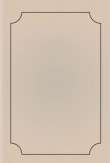You are here
قراءة كتاب Elements of Foreign Exchange: A Foreign Exchange Primer
تنويه: تعرض هنا نبذة من اول ١٠ صفحات فقط من الكتاب الالكتروني، لقراءة الكتاب كاملا اضغط على الزر “اشتر الآن"

Elements of Foreign Exchange: A Foreign Exchange Primer
Elements of Foreign
Exchange
A FOREIGN EXCHANGE PRIMER
By FRANKLIN ESCHER
Special Lecturer on Foreign Exchange at New York University
Fifth Edition
NEW YORK
THE BANKERS PUBLISHING COMPANY
1915
LONDON
EFFINGHAM WILSON, 54 THREADNEEDLE ST.
Copyright 1910
By the Bankers Publishing Co.
New York
CONTENTS
| PAGE | ||
| Chapter I. | What Foreign Exchange is and What Brings it into Existence | 3 |
| The various forms of obligation between the bankers and merchants of one country and the bankers and merchants of another, which result in the drawing of bills of exchange. | ||
| Chapter II. | The Demand for Bills of Exchange | 15 |
| A discussion of the six sources from which spring the demand for the various kinds of bills of exchange. | ||
| Chapter III. | The Rise and Fall of Exchange Rates | 25 |
| Operation of the five main influences tending to make exchange rise as opposed to the five main influences tending to make | ||
| Chapter IV. | The Various Kinds of Exchange | 45 |
| A detailed description of: Commercial "Long" Bills—Clean Bills—Commercial "Short" Bills—Drafts drawn against securities sold abroad—Bankers' demand drafts—Bankers' "long" drafts. | ||
| Chapter V. | The Foreign Exchange Market | 59 |
| How the exchange market is constituted. The bankers, dealers and brokers who make it up. How exchange rates are established. The relative importance of different kinds of exchange. | ||
| Chapter VI. | How Money Is Made in Foreign Exchange. The Operations of the Foreign Department | 68 |
| An intimate description of: Selling demand bills against remittances of demand bills—Selling cables against remittances of demand bills—Selling demand drafts against remittances of "long" exchange—The operation of lending foreign money here—The drawing of finance bills—Arbitraging in Foreign Exchange—Dealing in exchange "futures." | ||
| Chapter VII. | Gold Exports and Imports | 106 |
| The primary movement of gold from the mines to the markets, and its subsequent distribution along the lines of favorable exchange rates. Description (with presentation of actual figures) of: The export of gold bars from New York to London—Import of gold bars from London—Export of gold bars to Paris under the "triangular operation." Shipments to Argentina. | ||
| London as a "free" gold market and the ability of the Central Banks in Europe to control the movement of gold. | ||
| Chapter VIII. | Foreign Exchange in its Relation to International Security Trading | 130 |
| Europe's "fixed" and "floating" investment in American bonds and stocks a constant source of international security trading. Consequent foreign exchange business. Financing foreign speculation in "Americans." Description of the various kinds of bond and stock "arbitrage." | ||
| Chapter IX. | The Financing of Exports and Imports | 141 |
| A complete description of the international banking system by which merchandise is imported into and exported from the United States. An actual operation followed through its successive steps. | ||
PREFACE
"Where can I find a little book from which I can get a clear idea of how foreign exchange works, without going too deeply into it?"—that question, put to the author dozens of times and by many different kinds of people, is responsible for the existence of this little work. There are one or two well-written textbooks on foreign exchange, but never yet has the author come across a book which covered this subject in such a way that the man who knew little or nothing about it could pick up the book and within a few hours get a clear idea of how foreign exchange works,—the causes which bear upon its movement, its influence on the money and security markets, etc.
That is the object of this little book—to cover the ground of foreign exchange, but in such a way as to make the subject interesting and its treatment readable and comprehensible to the man without technical knowledge. Foreign exchange is no easy subject to understand; there are few important subjects which are. But, on the other hand, neither is it the complicated and abstruse subject which so many people seem to consider it—an idea only too often born of a look into some of the textbooks on exchange, with their formidable pages of tabulations, formulas, and calculations of all descriptions. For the average man there is little of interest in these intricacies of the subject. Many of the shrewdest and most successful exchange bankers in New York City, indeed, know less about them than do some of their clerks. What is needed is rather a clear and definite


